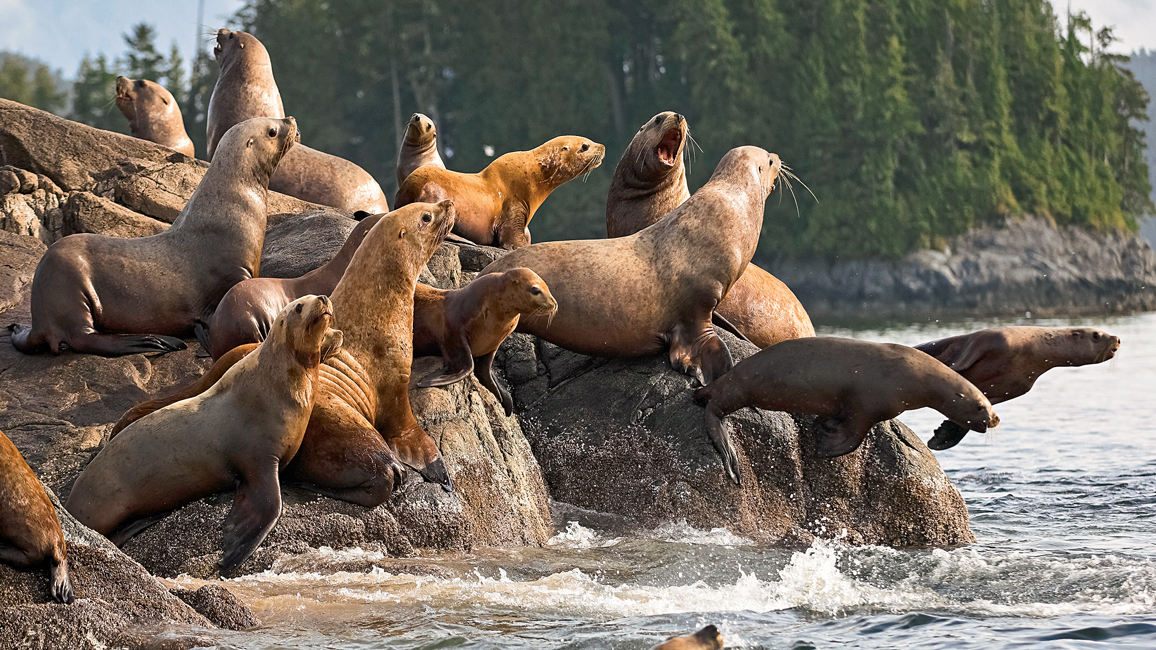
Wins for Wildlife!
By Hannah SchardtOnce, these North American animals were headed for a crash. But now their numbers are on the rise.
When scientists say an animal species is endangered, it’s like a big, flashing warning sign: Danger! Something is very wrong here!
People may be hunting too many of the animals. Or poisons in the environment may be hurting the animals or their young. Or, most often, the animals may be running out of places to find food and raise their young. And if nothing changes, the species may disappear forever.
But there’s good news! Sometimes people step in to figure out what’s going wrong and what can be done to fix it. Here are seven times when people did just that–and scored big wins for wildlife.
WIN #1 BALD EAGLE
Fifty years ago, our national symbol was in big trouble. Farmers were spraying a pest-control chemical called DDT on their crops, and it was ending up in bald eagles’ food. The DDT made the eagles lay eggs with very thin, fragile shells. So fewer bald eagle chicks were hatching.
How people helped: The U.S. government made it illegal to use DDT. Soon, bald eagles were laying healthy eggs again. And by 2007, the big birds were no longer endangered. Once again, they are found throughout the United States. Now that’s a reason to shell-ebrate!
NEWS FLASH!
More than 680 animal species are now on the U.S. list of threatened and endangered species.
WIN #2 STELLER SEA LION
Just a few decades ago, these sea lions–each of which can weigh more than a ton–had a weighty problem: There weren’t many of them left. People over-hunted them for their meat and fur. And fishermen killed the sea lions to keep them from eating the fish the fishermen wanted to catch.
How people helped: The government made it illegal to kill the sea lions. Now the U.S. population of Steller sea lions is big enough that it doesn’t need federal protection anymore. You can find them along the coasts of Canada, Washington, Oregon, and northern California.
WIN #3 AMERICAN ALLIGATOR
This toothy reptile looks as though it could handle just about any trouble. But by the late 1950s, the American alligator had almost completely disappeared from its home in the southeastern United States. People killed too many of the gators for their skin, which was used to make purses, shoes,
and other things.
How people helped: They passed laws that made it illegal to kill wild alligators. The gator bounced back quickly–snatching victory from the jaws of defeat!
WIN #4 WHOOPING CRANE
Whooping cranes were always pretty rare. Before European settlers arrived, probably only 10,000 or so of the birds spent their summers in what is now Canada and the northern United States and their winters near the southern U.S. coast. But then people started hunting them and destroying their wetland habitat. By 1941, only 15 adult whoopers were left.
How people helped: Scientists started trapping the birds and helping them to breed. To keep the birds from getting used to humans, the scientists who fed the chicks even dressed up as adult cranes! Whooping cranes are still endangered, but now there are nearly 400 living in the wild.
WIN #5 AMERICAN BISON
In the 1800s, settlers on the American prairies killed tens of millions of American bison, also called buffalo, for meat and for sport. By 1889, only about a thousand were left.
How people helped: They set aside protected land for bison. Scientists started breeding bison and releasing them back into the wild places where they had once lived. Now hundreds of thousands of bison live on ranches throughout the country, and more than 15,000 live in the wild–mostly in Montana, Utah, South Dakota, and Canada.
WIN #6 HUMPBACK WHALE
This gentle giant of the sea was hunted nearly to extinction. People killed it for its meat and its blubber, which they turned into oil.
How people helped: Most humpback hunting was banned in 1966. And the massive mammals have made a whale of a comeback: Scientists believe there are now 80,000 of them in oceans around the world.
WIN #7 GRAY WOLF
A long time ago, many people thought there was nothing good about this “big, bad” wolf. In fact, the U.S. government paid people for each wolf they killed. Soon, the wolves had disappeared from most places in the United States.
How people helped: With strong public support, scientists began trapping wolves in Canada and releasing them into Yellowstone National Park. Today there are a few thousand wolves south of the U.S.-Canadian border, mostly in the western United States and the northern Great Lakes region. Once again, wolves roam free in some of the wild places that are their historic homes.
Hey, kids! Endangered Species Day is May 15! Go online to endangeredspeciesday.org to learn how you can help!
“Ranger Rick SPECIAL REPORT 7 WINS FOR WILDLIFE!” originally appeared in the May 2015 issue of Ranger Rick magazine.
(Click on each image above for a closer view of the story.)



















